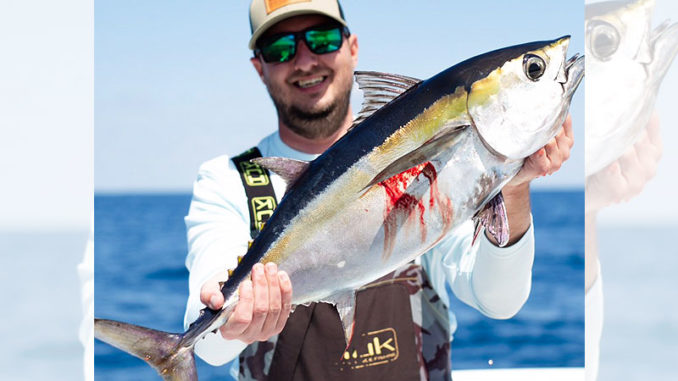
South Carolina tuna kick off spring run
After a long, unsettled winter, spring kicks off with warm weather, calm sea, and hot action in South Carolina’s offshore waters — some of the best tuna fishing of the year gets rolling this month.
Captain Robby Remson of Carolina Hook & Line in Murrells Inlet, S.C., can’t wait for spring for one reason: blackfin tuna.
“April is my favorite time for offshore fishing here,” said Remson (843-340-0779). “In April, we always catch our biggest tuna — upwards of 30 pounds.”
Blackfin tuna are pelagic fish that inhabit the warm waters along the Gulf Stream current and stay year-round.
“Unlike a lot of other species that come and go, we catch tuna all year, but April is always exceptional, and May can be really good too,” he said.
Tuna travel in schools, often large schools, to feed and for protection. Even though blackfin tuna can get up to 30 to 40 pounds, they are far from the top of the food chain and can be very susceptible to predation. As a result, they can be very temperamental, and that makes it difficult for anglers. Remson has honed his tactics to get his baits in front of these fish.
Fish far behind the boat
“We fish our lines much further back than you normally would for dolphin and other species,” he said. “It’s the difference between catching them and not on most days.”
Tuna are attracted to bait schools, and when anglers run over or near a school of bait with tuna close by, they will dive deep. Remson prefers extremely long lines to allow enough time for the tuna to re-surface when his baits are in the strike zone.
“The tuna will not want to dive deep for long, because they don’t want the school of bait to get away from them. But the boat noise will definitely make them dive,” he said.
Remson avoids using planers for tuna fishing because of the same reason. Additional hardware in the water can increase the threat level, making tuna stay deep or dive even deeper.
Remson uses a typical ballyhoo-sea witch rig with a preference for the smaller-sized ballyhoo. However, he is a true fan of old-fashioned cedar plugs in the smallest sizes he can find.
“Most people use the 6- and 8-inch versions, but I prefer the smaller, 4-inch versions,” he said. “They out-fish ballyhoo most days and are more manageable, especially when you get into heavy grass. You can just shake it off and go back to fishing.”
Remson will use a variety of cedar plug colors, but red head/silver body and purple are his favorites.

